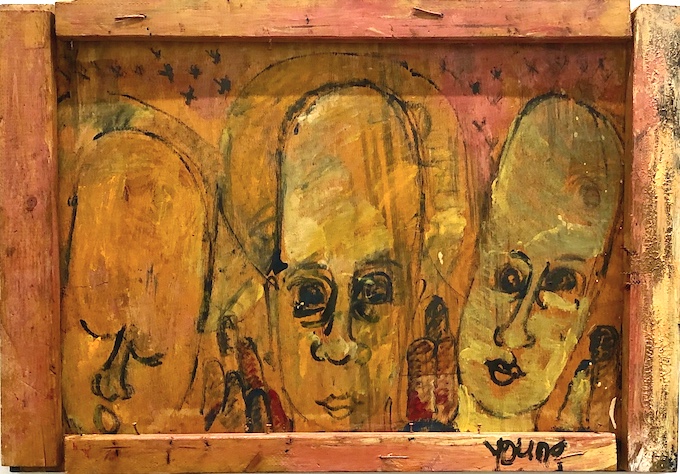Visiting hours: by appointment, please email us to schedule your visit: info@monirafoundation.org

Visiting hours: by appointment, please email us to schedule your visit: info@monirafoundation.org
Monira Foundation proudly presents Purvis Young a year long exhibit at Mana Contemporary Chicago. Curated by Ysabel Pinyol Blasi.
Young was self-taught, producing a remarkable number of works over his lifetime that convey rich scenes—at once pictorial and spiritual—of his life spent in the inner-city Miami neighborhood of Overtown. Informed by an early practice of drawing from life, Young began making paintings in the 1960s. Blending techniques of painting, drawing, and collage, Young collected discarded materials found on the streets and in abandoned buildings across his locale to incorporate as the surfaces for his work. Elements of action, figuration, and storytelling are laid over a series of structural devices, activating the ways in which the found materials onto which Young painted would serve to frame the images placed upon them. While some of these panels are smoother or more straightforward in proportion, others approach a mode of assemblage that reflect the variable and multi-layered narratives found across the artist’s work. The materiality of Young’s paintings reflects the artist’s own relationship to architecture, place, and time in Overtown. This sense of site-specificity is translated when encountering the works in person, whereby the panels offer a certain reconstruction of the environments from which they once came.
Young’s use of repurposed materials also speaks to the artist’s long-running ecological concerns, which are often expressed in the imagery of his works. At the beginning of his life, Young was witness to a time of political and social upheaval, including the civil rights movement as well the Vietnam war and the spirit of mass protest against it. Coming into adulthood, he was of aware of the large outdoor murals created by artists in Detroit and Chicago. Young began attaching his own panels to the front of abandoned buildings, doubling as a kind of material return for the work itself. Around 1972, Young began his large-scale outdoor project known at Goodbread Alley, which he filled with innumerable paintings over time on a rotational basis. Coupled with Young’s choice of this particular mode of presentation for his works, he considered the paintings to be fine art, and would most often sign his name on the front of the image.
Don't miss out on new events, programs, and artist opportunities!
Notifications